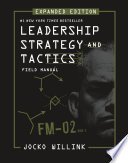

Leadership is not just about managing people; it’s about setting a vision and inspiring others to achieve it. In 'Leadership Strategy and Tactics,' Jocko Willink emphasizes that effective leaders must understand the strategic landscape of their organization. This means recognizing not only the goals but also the strengths and weaknesses of their team members. By aligning the team's capabilities with the strategic objectives, leaders can create a cohesive force that drives the organization forward. A key takeaway is that strategy without effective leadership is merely a plan on paper. The success of any strategy depends heavily on the leader’s ability to communicate the vision, motivate the team, and adapt to changing circumstances. Leaders should also be prepared to make tough decisions that align with the overall strategy, demonstrating that leadership is as much about courage as it is about vision.
Continue readingCommunication is a fundamental skill for any leader. Willink discusses various tactics that leaders can employ to ensure their message is clear and resonates with their audience. This includes understanding the audience's perspective, using simple and direct language, and ensuring that the message is consistent across all levels of the organization. Effective communication also involves listening; leaders must be open to feedback and willing to adjust their approach based on the input they receive. Willink emphasizes that communication is not just about speaking but also about creating an environment where team members feel safe to express their thoughts and ideas. This two-way communication fosters trust and collaboration, which are essential for a high-performing team.
Continue readingOne of the key concepts in Willink’s book is decentralized command, which refers to the practice of empowering team members to make decisions within their areas of responsibility. This approach not only increases efficiency but also fosters a sense of ownership among team members. Willink argues that leaders should provide clear guidance and expectations but then allow their teams the freedom to execute their tasks as they see fit. This requires trust; leaders must trust their team members to make the right decisions. Decentralized command also means that leaders need to ensure their teams are well-trained and equipped to handle the responsibilities assigned to them. By promoting a culture of accountability and empowerment, organizations can respond more quickly to challenges and seize new opportunities.
Continue readingDiscipline is a recurring theme in Willink’s philosophy on leadership. He argues that discipline is the foundation of effective leadership and is essential for achieving long-term success. Leaders must be disciplined in their own actions, setting an example for their teams. This includes being punctual, maintaining high standards, and following through on commitments. Willink also emphasizes the importance of developing a disciplined organizational culture where everyone understands the importance of accountability and consistency. Discipline is not about rigidity; rather, it’s about creating an environment where excellence is expected and achieved. By instilling discipline within their teams, leaders can drive performance and foster a culture of continuous improvement.
Continue readingTrust is the cornerstone of effective leadership. Willink highlights the need for leaders to build strong relationships with their team members based on trust and respect. This involves being transparent, honest, and consistent in their actions. Leaders should also take the time to understand their team members on a personal level, which helps to create a supportive and collaborative environment. Willink points out that trust is built over time through consistent actions and behaviors. When team members trust their leaders, they are more likely to be engaged, motivated, and willing to go the extra mile. Building trust also involves acknowledging mistakes and being open about challenges, which fosters a culture of learning and growth.
Continue readingEmotional intelligence (EI) is a critical component of effective leadership. Willink discusses how leaders must be aware of their own emotions and those of their team members to navigate interpersonal dynamics effectively. High EI allows leaders to respond to situations with empathy and understanding, which can de-escalate conflicts and foster collaboration. Willink emphasizes that leaders should be attuned to the emotional climate of their teams and be willing to address issues that may affect morale and productivity. By developing their emotional intelligence, leaders can create a more positive work environment and enhance team cohesion, ultimately leading to better performance.
Continue readingThe ability to adapt is crucial in today’s fast-paced and ever-changing business environment. Willink encourages leaders to embrace a mindset of continuous learning and adaptability. This means being open to new ideas, willing to change course when necessary, and constantly seeking opportunities for personal and professional growth. Willink argues that leaders should not only be adaptable themselves but also encourage their teams to be flexible and innovative. By fostering a culture of learning and adaptability, organizations can remain competitive and responsive to market changes. This proactive approach to leadership ensures that teams are not just reacting to challenges but are prepared to anticipate and seize new opportunities.
Continue reading